Summary
This article describes the grounding and earthing considerations applying to the various components (sensors, junction boxes, multi-pair cable and cable trays) that make up an online Vibration Monitoring System (VMS).
Details
Why good grounding and earthing practice is important
A primary purpose for grounding of electronic equipment is personal safety. A properly installed safety ground on electronic equipment allows faults to be cleared by the fast opening of circuit breakers or fuses and is no different than that of other equipment. Safe grounding results in all exposed metal surfaces on the electrical system and equipment staying within levels that people can safely contact.
Electronic systems’ circuit components can be sensitive to relatively small transient currents and voltages. The inherent nature of solid-state devices allows them to respond very quickly; this means that they can be affected by short duration electrical disturbances that are difficult to capture on analysis instrumentation.
Electrical earthing (also called Protective Earthing (PE))
A ground bus that carries the large electrical currents from heavy machinery. This ground could be in a Motor Control Center (MCC) where motors are turned on and off, and where large current and voltage surges are possible. A separate conductor is run from the MCC dirty ground bus to the 0 V earth ground at the power input panel.
Instrument earthing (also called Reference Earth (RE))
A ground bus where instrumentation requiring a clean ground are connected with a separate conductor run to the 0 V plant ground. Examples of clean grounds are the DC grounds, usually 24 VDC, that reference the Programmable Logic Controller (PLC), Distributed Control System (DSC), or metering/control system in the plant.
Earthing as applied to SKF VMS
Electrical earthing (PE)
Is used to protect the power system, electrical equipment, and personnel from electric shock. Typically connected to PE will be:
- The cabinet itself, including door.
- Outer armoring of multi-pair cable.
- The PE connection of VMS components fitted in the cabinet.
Examples of the PE connection on some SKF online devices:
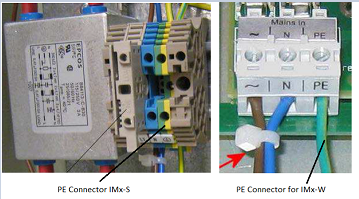 |
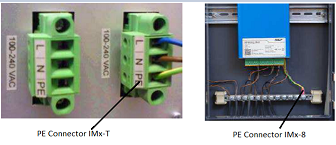 |
The method of connection to PE, can vary depending on the situation:
- Armor of single and multi-core cable going to a junction box should be terminated at the cable gland.
- If the junction box is metallic, then it only needs that the earth stud bolt for the box be connected to the nearest steel structure.
- If the junction box is nonmetallic, the earth stud bolt will be located at the metal gland plates which have direct electrical contact with the cable gland.
- Armor of field instrument cable shall be terminated at a cable gland.
- Armor of single and multi-core cable going inside, or outside of system cabinet shall be terminated and connected to a bus bar inside the cabinet.
Instrument Earthing (RE)
The general principle of an instrument earth is that all individual shields (screens) and overall shield (screen) of single or multi pair cable shall be separated from electrical earthing and terminated at a different bus bar (the instrument earth):
- This instrument earth is often called reference earth since it serves as the reference point of the instrument loop (ground of the internal electric circuit inside the instrument).
At junctions boxes: - Individual shields from single pair (isolated) sensor cabling going inside the junction box shall be terminated to terminal blocks, which will each connect through to the corresponding individual shields of the multi pair site cabling, to the cabinet.
At the main VMS cabinet: - All individual and overall shields (screen) from the multi pair cable shall be terminated at the instrument earth bus bar in the main cabinet.
Note: Instrumentation grounds should never be used for electrical power circuit grounding. If used, they will generally result in compromising the integrity of the instrumentation ground and inducing noise into the entire instrumentation system.
Overview of a typical sensor assembly
The most common sensor cable assemblies can be classified as either isolated or non-isolated. In this context, the term "isolated" refers to whether the outer shield of the cable is connected to machine ground through the sensor body (non-isolated) or disconnected from machine ground and the sensor body (isolated).
- Improper use of the outer shield of the sensor cable can allow false signals to be superimposed on the vibration signal.
- A shield with no ground connection can cause heightened sensitivity to outside signals (floating ground).
- A shield with multiple ground points can induce a false vibration signal due to differing ground potentials (ground loops).
Non-isolated Cable Assembly
Arrangement for a non-isolated, sensor cable assembly:
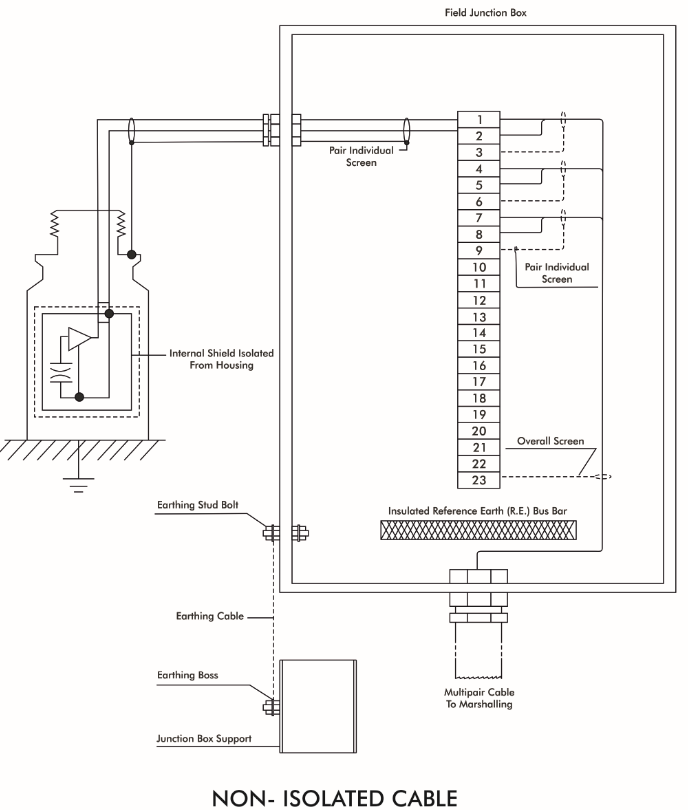
In this arrangement the cable shield is depending upon a solid shield ground through the sensor mounting to the machine ground. No shield ground connection is made at the monitoring instrument end of the cable, although a high-frequency bypass capacitor is occasionally used.
Isolated Cable Assembly
Arrangement for an isolated, sensor cable assembly:
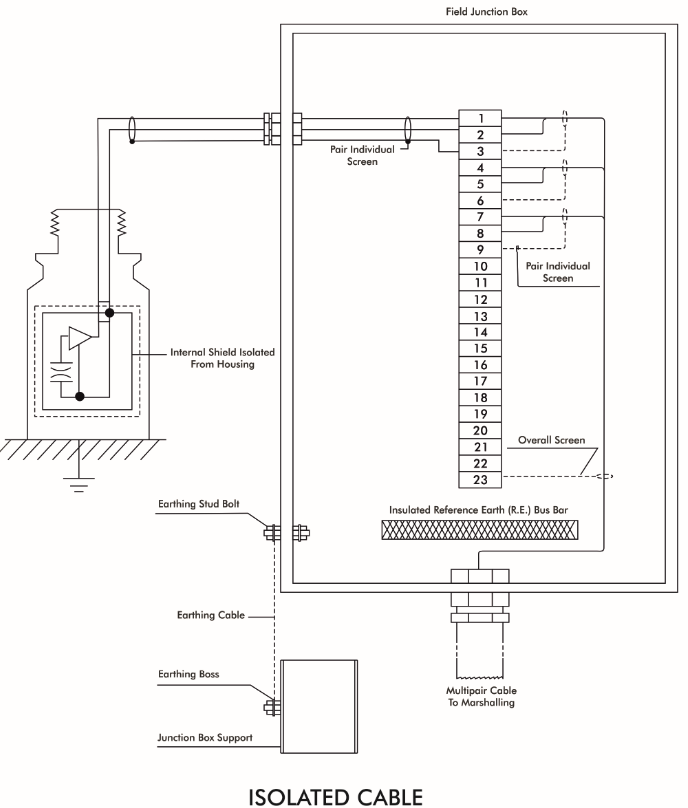
The cable shield is isolated from the sensor body and machine ground. The individual screens of the sensor cabling are therefore connected through, to a high-quality instrumentation ground at the monitoring instrument.
Ground Schematic for the field cable trays
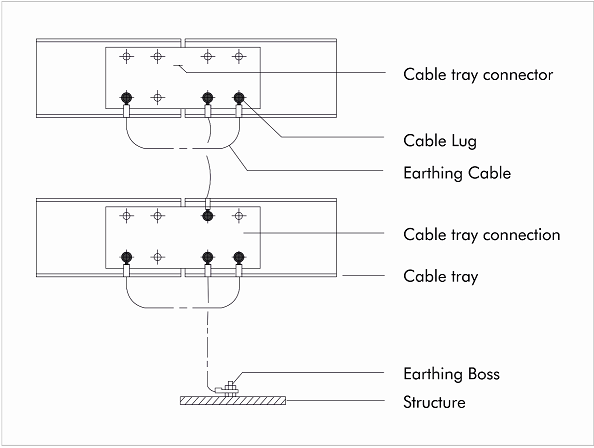
Main VMS cabinet earthing arrangement
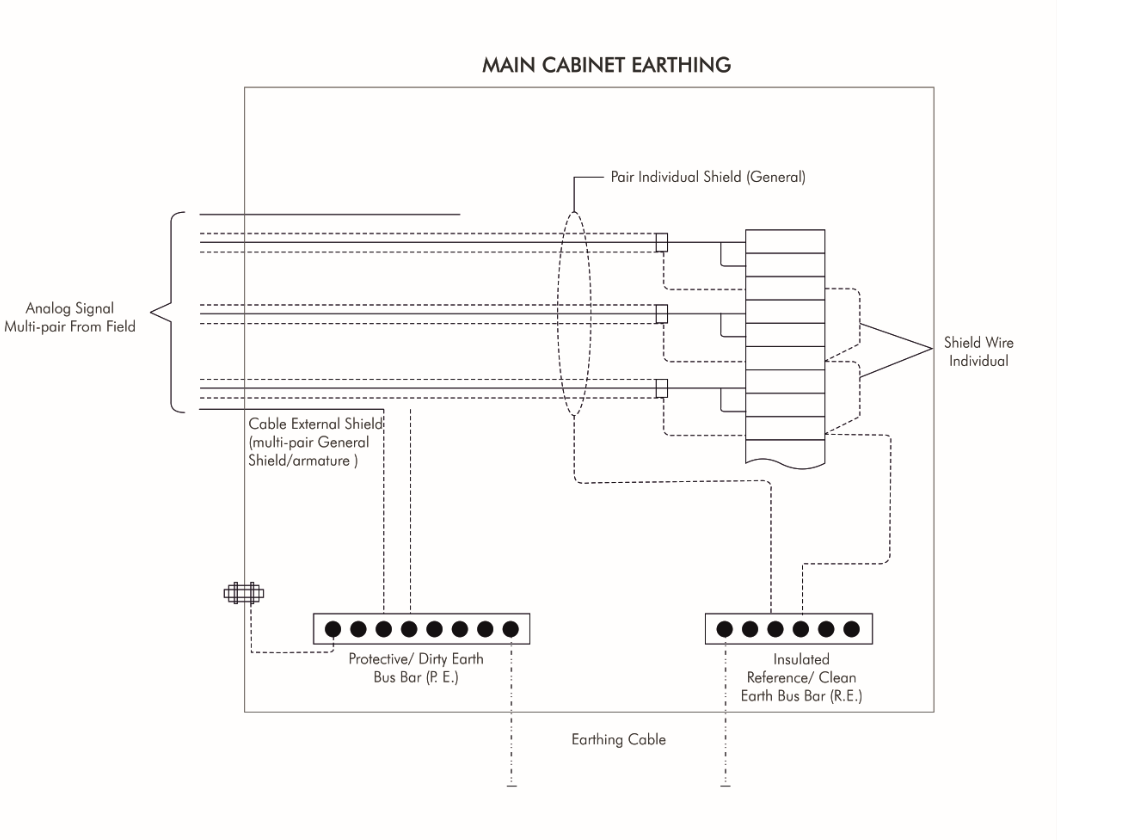
Contacting SKF Technical Support Group
For further assistance please open a support case using the Technical Support group's self-help portal at www.skf.com/cm/tsg. Once your support case is submitted, a technician will contact you to begin working on your issue. For urgent issues we are available at these times by phone:
- Monday through Friday, 5:00 a.m. to 4 p.m. Pacific Time -
Phone: +1 800 523 7514 within the US or +1 858 465-4510 outside the US. - Monday through Friday, 8:00 a.m. to 4:00 p.m. Central European Time -
Phone: +46 31 337 65 00. - Monday through Friday, 7:30 a.m. to 4:30 p.m. India Standard Time -
Phone: +60 16 699 9506.
Comments
0 comments
Please sign in to leave a comment.